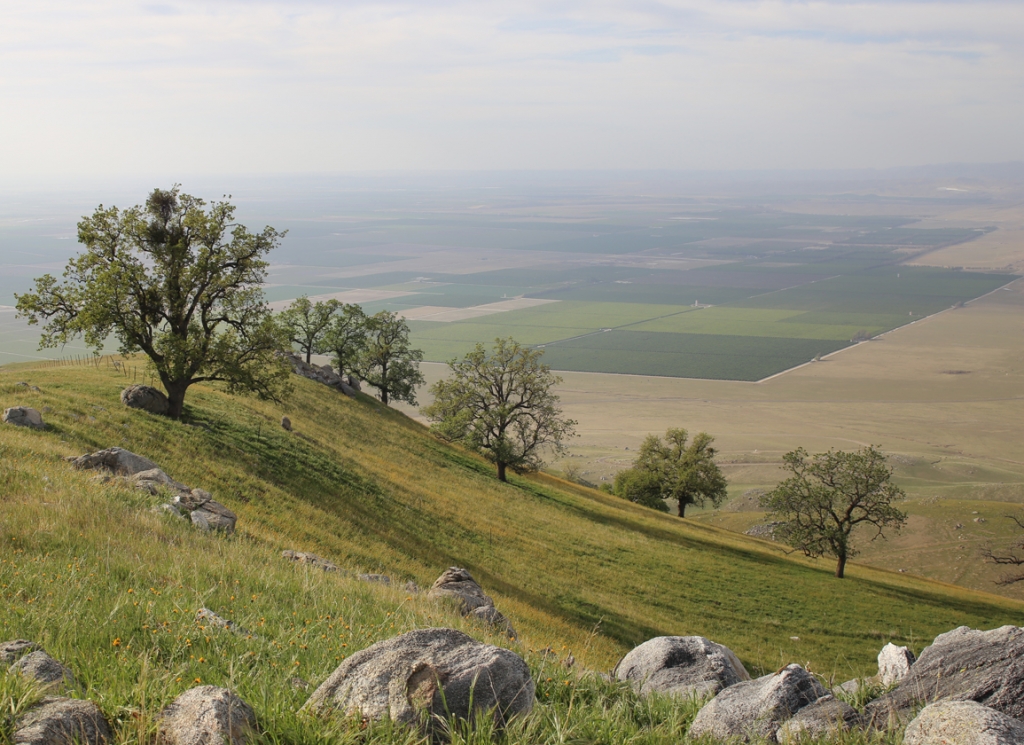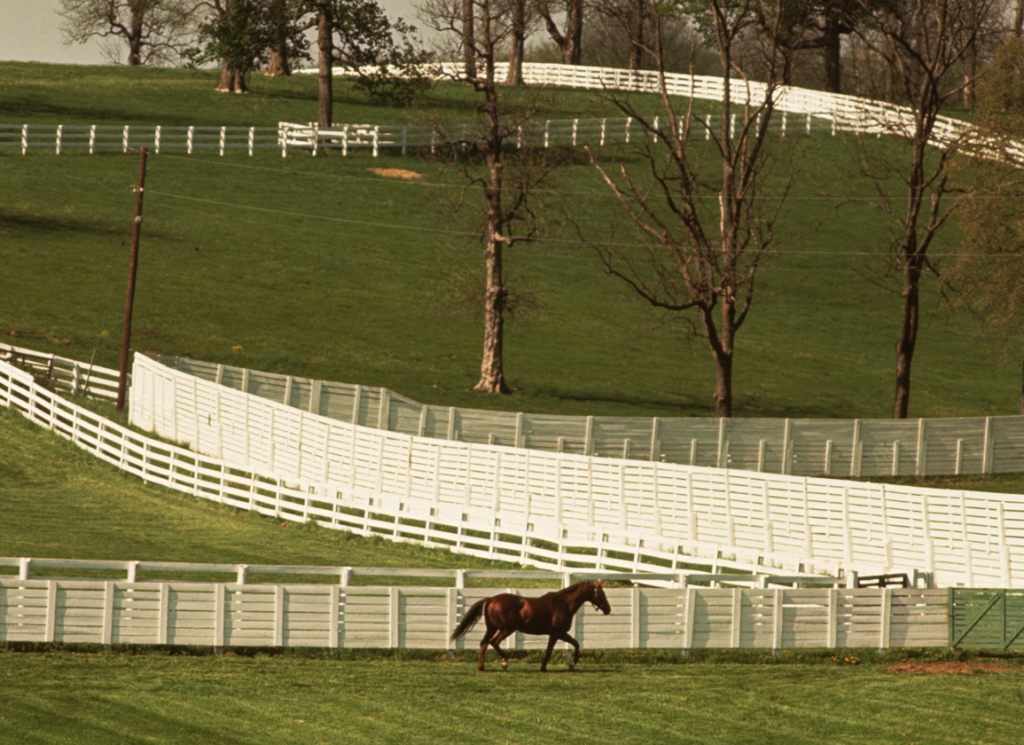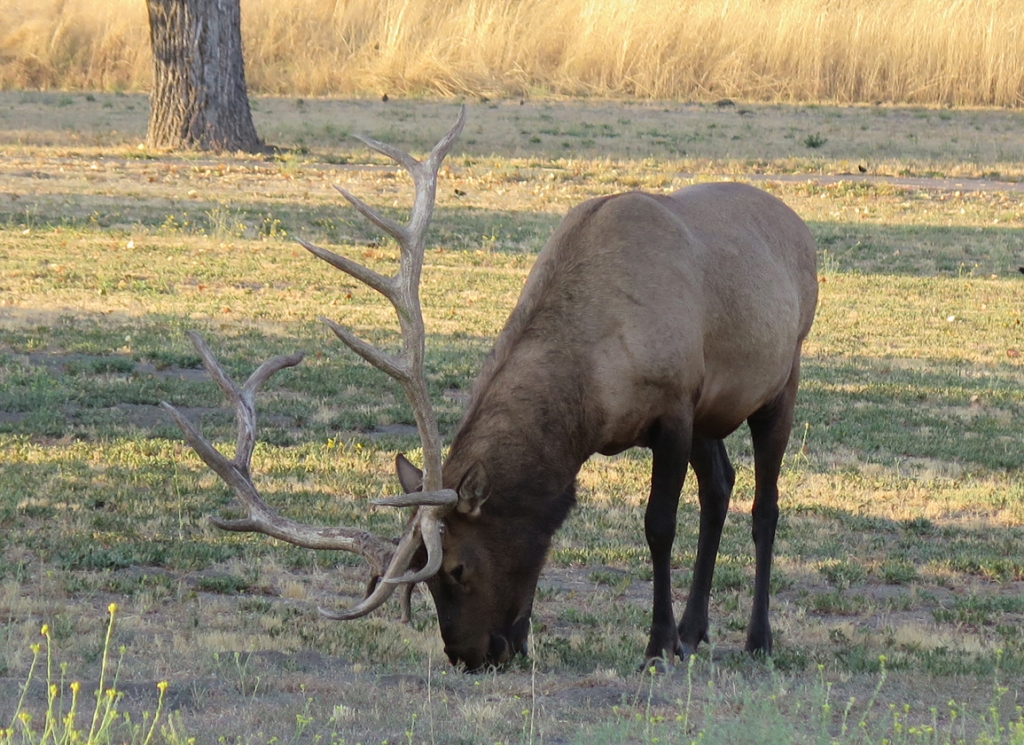In the unlikeliest of places, far from the rolling hills of Kentucky or any of racing's other hallowed grounds, there's a connection to racing lore. Located in the high desert of California–west of the Mojave Desert, inland from the Pacific Ocean, and due north of Los Angeles–is the sprawling mountain community of Tehachapi. It was here that Hall of Famer Swaps was bred and raised on Rex Ellsworth's ranch.
Swaps, of course, had that glorious rivalry with Nashua in 1955 and was named Horse of the Year in 1956. But while Nashua was a classic blueblood and a Belair Stud homebred trained by the legendary James “Sunny Jim” Fitzsimmons, Swaps was more of a blurred contradiction, especially in the media at the time, which frequently portrayed him and his connections as anything but polished. Even his pedigree fell somewhere between the old adages of “breed the best to the best and hope for the best” and “a good horse can come from anywhere.”
By all accounts, both Ellsworth and his trainer, Meshach “Mesh” Tenney, were cowboys with unconventional horse management standards. They had grown up together in Arizona, cattlemen and horsemen to the core. The pair were just 26 in 1933 when Ellsworth and his brother, Heber, drove a rickety trailer to Kentucky and returned $600 poorer but accompanied by six broodmares and two weanlings. It was only the beginning. Ellsworth's bloodstock holdings gradually increased, as did his land. He eventually purchased Khaled, Swaps' sire, from the Aga Khan in Ireland and stood the stallion himself in California after he was unable to seal a deal for the horse he really wanted: Nasrullah, who would, ironically, sire Nashua.
Whatever his methods, there was no arguing with Ellsworth's success, as he won not just the Kentucky Derby with Swaps, but a total of three editions of the Santa Anita Derby, and eventually added both a Preakness and even a Prix de l'Arc de Triomphe. In 1963, he joined Calumet Farm and Cornelius Vanderbilt Whitney as only the third owner in history to win $1 million in a year. That year Sports Illustrated called him “the world's largest non-market breeder and, with about 500 head at his disposal, he is unquestionably owner of the world's largest active racing stable.” He estimated he also owned about 1,000 square miles of land at the time and about 20,000 head of cattle.

Rex Ellsworth, Mesh Tenney, and regular rider Bill Shoemaker at Hollywood Park's Swaps statue dedication in 1958 | Getty Images
Ellsworth's Southern California farm on 440 acres in the Chino area–where Swaps stood his first season at stud–is the better known of his Thoroughbred properties, but it was on his 24,000 acres in Tehachapi where Swaps took his first breath.
“Ellsworth apparently liked the fact that [the area] in the Tehachapi Mountains was fairly close to racing tracks and all the activity of the greater Los Angeles area, yet was still quite remote and agricultural,” said lifelong Tehachapi resident and local historian Jon Hammond. “Many of his neighbors raised hay that could be purchased to feed the Ellsworth horses, and there were plenty of locals who could be hired to help run the ranch and horse operation. Summertime temperatures were typically in the high 80s during the day and 60s at night, making it a cooler, more comfortable place for the mares and their foals to live. The surrounding areas–San Joaquin Valley, Mojave Desert, Antelope Valley, etc.–are all considerably hotter.”
Named for a Native American word reportedly meaning “the place where the people of the acorns lived” instead of a word of Spanish origin like so many others in California, Tehachapi includes a series of valleys with both grasslands and rugged terrain that have been claimed by ranchers since California first became a state. It is an isolated oasis at 4,000 feet, subject to all four seasons unlike the desert sands that extend beyond the mountains that entirely encircle it. Mortar holes made by Native Americans in large boulders–where acorns were ground into coarse meal–are still found all over the valley, including on Ellsworth's former property.
Cattle and sheep land since the 1850s, the property that became Ellsworth Ranch changed hands at least four times over nearly a century until Ellsworth acquired it. With some wheeling and dealing and swapping of land, his Tehachapi ranch eventually encompassed approximately 24,000 acres. As had been his preference since childhood, horses and cattle were his livestock of choice on the spread. Hammond theorized Ellsworth bred Thoroughbreds on the ranch to gain a perceived advantage. “Being raised at this elevation, which produced stronger pulmonary systems, was said to have benefitted horses that were racing at tracks that were mostly located at about sea level.”
Swaps was born somewhere on the property Mar. 1, 1952–reports range from in a stall under Ellsworth's watchful eye to outside in a puddle away from any human intervention. The year he was born, the earth shook. Swaps was a mere four months old when a devastating earthquake measuring somewhere between 7.3 and 7.7 on the Richter Scale flattened much of the tiny town and killed 12. The population at the time was fewer than 2,000.
Ellsworth eventually sent Swaps south to be broken and to race, but he continued to raise Thoroughbreds in Tehachapi. Swaps, of course, was the second of an eventual four California-breds to win the Kentucky Derby and had a storied career that included six world records.
The fellow Hall of Famer Nashua will always be inextricably linked with Swaps, but they actually only met twice and it was a draw. Swaps beat Nashua in the Kentucky Derby. Nashua beat Swaps nearly four months later in a match race at Chicago's Arlington Park. They never met again on the racetrack, but the two would eventually stand side by side at Spendthrift Farm.
Swaps ended his career abruptly in October, 1956, when he seriously fractured a rear leg. Fitzsimmons, Nashua's trainer, sent Tenney a special sling used to raise and lower the horse. The sling was credited with helping to save his life.
A deal was struck with John Galbreath of Darby Dan Farm in Lexington for half of Swaps, with the original agreement calling for Swaps to ship back and forth between California and Kentucky each year. Swaps did stand his first season at Ellsworth's farm in Chino, but Galbreath reportedly visited and was taken aback by the functional yet Spartan and decidedly non-Kentucky-like facilities. The next year, Ellsworth sold the other half of Swaps outright to Galbreath. The horse transferred to Darby Dan and never saw California again.
Ellsworth was derided publicly for selling his stable star. His response would not have won him any sympathy in today's world of social media: “I was criticized by some people for selling Swaps out of the state and all that. They said it was lack of affection for a horse that had won me all that money. They just don't know. I sold Swaps for $2 million to Mr. Galbreath because it was a case of necessity for me. I couldn't afford to keep him. But fondness is not the right word anyway. I had no more fondness for Swaps over the rest of my horses than I have fondness for one of my five children over the other four.”
Swaps would sire three U.S. champions, all in his initial crops: Chateaugay, who emulated his sire with a Kentucky Derby win and only missed the Triple Crown by a second in the Preakness to Ellsworth and Tenney's Candy Spots; the grand filly Affectionately, whose 18 stakes wins included the Spinaway at two and the Vosburgh against males at four; and Chateaugay's full-sister Primonetta, who was the first foal by Swaps to be born and whose nine black-type wins included such luminous races as the Alabama and Spinster.
Unfortunately, Swaps didn't exactly set the world on fire with his sire sons, but he has made a lasting impact with his daughters. Primonetta was named Broodmare of the Year in 1978, but that was only the beginning. A number of blue hens–including Fall Aspen, Toussaud, Numbered Account, Glorious Song, and Take Charge Lady–have Swaps on their dam side. Through their sons and daughters, Swaps will live on in pedigrees for a very long time. Swaps moved to Spendthrift for the last five years of his career and died in 1972 at age 20.
As for Tehachapi, in late 1969, Ellsworth sold his ranch to Benquet California Corporation for a planned subdivision. A residential community was developed with a golf course and named Stallion Springs. Few concrete reminders remain of Swaps or Ellsworth in Tehachapi, but Stallion Springs is littered with streets named with racing in mind. Names like Tanforan Drive, Tim Tam Place, Man o' War Drive, Bimelech Court, Hialeah Drive, Busher Way, Kelso Court, and more remain. It's a safe bet that most of the people living on Bowie Street don't know Bowie was once a racetrack, nor that those on Shut Out Place know that Shut Out won the 1942 Derby and Belmont Stakes, and still fewer on Stymie Court know that great horse's Hall of Fame credentials. Those of us who do smile when we drive by and let our hearts be warmed by memories of the greats while so far removed from the heart of the Thoroughbred industry.
“Some of Ellsworth's ranch buildings lasted for many years after he was no longer active in the area,” said Hammond. “Some of these were on property later owned for many years by actor Jack Palance. As large agricultural operations of row crops–almost entirely organic greens, carrots, cabbages, etc.–became active in [the valley] in the 2000s, I believe that the last of those buildings were removed.”
Ellsworth himself, of course, had a famously ruinous end to his 40-plus years in racing. In 1975, Ellsworth's Chino ranch was seized by the state of California when over 100 horses were found neglected and severely malnourished on the property. Among the perished was Iron Reward, the 29-year-old dam of Swaps who had been named Broodmare of the Year in 1955.
The Ellsworth name didn't leave a lasting impression in Tehachapi, other than a footnote in history. However, Ellsworth did change the landscape in one crucial way. In the mid-60s, in one of his many ventures, he brought around 400 Rocky Mountain Elk from the Yellowstone area to his ranch, reportedly with the intent of increasing the herd and eventually charging visitors to hunt them.
From the start, the elk project didn't go well. A number died during shipping and the animals originally failed to thrive in their new home. Ellsworth had them housed in a 640-acre enclosure, but the numbers had dwindled to approximately 200 in 1967 when a storm blew down a massive oak tree and damaged the tall fence surrounding them. The majority escaped and today, nearly 55 years later, large bands of elk roam all over Tehachapi mountains. The cows and calves tend to stick together at higher elevations, but bachelor herds are a frequent sight all over the local valleys. They loll in the local ponds during summers. Gardens, lawns, and lawn decorations are no match for their appetites or brute strength, but they remain a magnificent sight in front yards and in open spaces. More than one resident in the area has had been tardy to an appointment as elk are in no hurry when crossing local roads.
Swaps himself? There is no marker in Tehachapi commemorating the great champion. There is no record of exactly where he was born or in exactly which fields he spent his early years before leaving his hometown for a Hall of Fame career. His name is instead relegated to a small street, just off Seabiscuit Way and just over a mile removed from Nashua Court. For the record, the stretch of Swaps Court exceeds Nashua Court by several lengths.
The post Chasing Ghosts: Swaps appeared first on TDN | Thoroughbred Daily News | Horse Racing News, Results and Video | Thoroughbred Breeding and Auctions.






